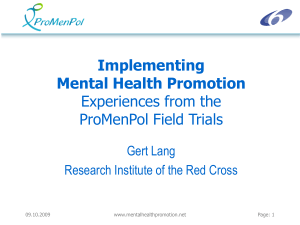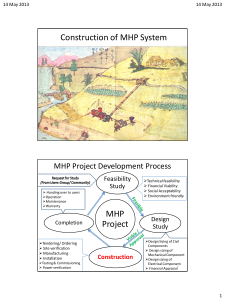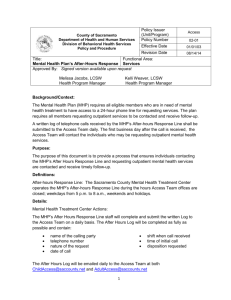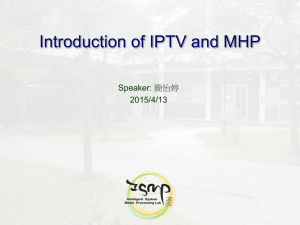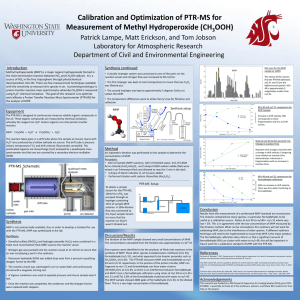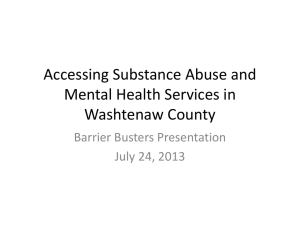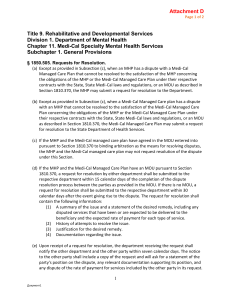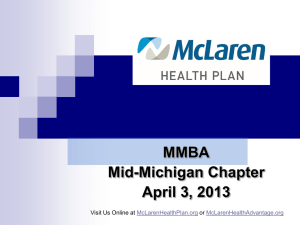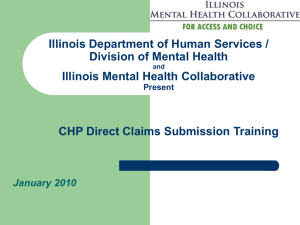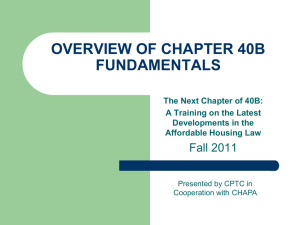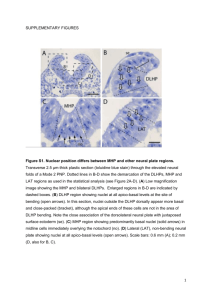MAKING HEALTHY PLACES:
advertisement
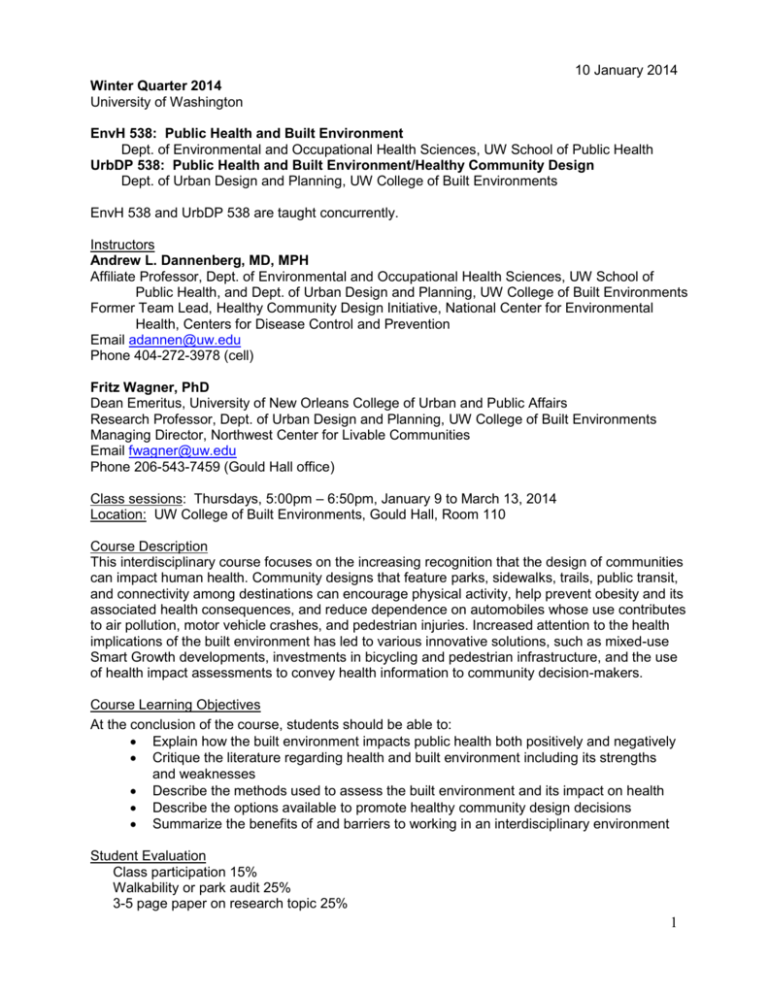
10 January 2014 Winter Quarter 2014 University of Washington EnvH 538: Public Health and Built Environment Dept. of Environmental and Occupational Health Sciences, UW School of Public Health UrbDP 538: Public Health and Built Environment/Healthy Community Design Dept. of Urban Design and Planning, UW College of Built Environments EnvH 538 and UrbDP 538 are taught concurrently. Instructors Andrew L. Dannenberg, MD, MPH Affiliate Professor, Dept. of Environmental and Occupational Health Sciences, UW School of Public Health, and Dept. of Urban Design and Planning, UW College of Built Environments Former Team Lead, Healthy Community Design Initiative, National Center for Environmental Health, Centers for Disease Control and Prevention Email adannen@uw.edu Phone 404-272-3978 (cell) Fritz Wagner, PhD Dean Emeritus, University of New Orleans College of Urban and Public Affairs Research Professor, Dept. of Urban Design and Planning, UW College of Built Environments Managing Director, Northwest Center for Livable Communities Email fwagner@uw.edu Phone 206-543-7459 (Gould Hall office) Class sessions: Thursdays, 5:00pm – 6:50pm, January 9 to March 13, 2014 Location: UW College of Built Environments, Gould Hall, Room 110 Course Description This interdisciplinary course focuses on the increasing recognition that the design of communities can impact human health. Community designs that feature parks, sidewalks, trails, public transit, and connectivity among destinations can encourage physical activity, help prevent obesity and its associated health consequences, and reduce dependence on automobiles whose use contributes to air pollution, motor vehicle crashes, and pedestrian injuries. Increased attention to the health implications of the built environment has led to various innovative solutions, such as mixed-use Smart Growth developments, investments in bicycling and pedestrian infrastructure, and the use of health impact assessments to convey health information to community decision-makers. Course Learning Objectives At the conclusion of the course, students should be able to: Explain how the built environment impacts public health both positively and negatively Critique the literature regarding health and built environment including its strengths and weaknesses Describe the methods used to assess the built environment and its impact on health Describe the options available to promote healthy community design decisions Summarize the benefits of and barriers to working in an interdisciplinary environment Student Evaluation Class participation 15% Walkability or park audit 25% 3-5 page paper on research topic 25% 1 Two minute oral testimony 15% Written comments on readings 20% Access and Accommodations Your experience in this class is important to us, and it is the policy and practice of the University of Washington (UW) to create inclusive and accessible learning environments consistent with federal and state law. If you experience barriers based on a disability or temporary health condition, please seek a meeting with DRS (Disability Resources for Students) to discuss and address them. If you have already established accommodations with DRS, please communicate your approved accommodations to your instructor so we can discuss your needs in this course. DRS offers resources and coordinates reasonable accommodations for students with disabilities and/or temporary health conditions. Reasonable accommodations are established through an interactive process between you, your instructor(s) and DRS. If you have not yet established services through DRS, but have a temporary health condition or permanent disability that requires accommodations (this can include but not limited to; mental health, attention-related, learning, vision, hearing, physical or health impacts), you are welcome to contact DRS at 206543-8924 or uwdrs@uw.edu or disability.uw.edu Academic Integrity Students at UW are expected to maintain the highest standards of academic conduct, professional honesty, and personal integrity. UW is committed to upholding standards of academic integrity consistent with the academic and professional communities of which it is a part. Plagiarism, cheating, and other misconduct are serious violations of the UW Student Conduct Code (WAC 478-120). We expect you to know and follow the university's policies on cheating and plagiarism, and the SPH Academic Integrity Policy. Any suspected cases of academic misconduct will be handled according to UW regulations. For more information, see the UW Community Standards and Student Conduct website. Class Schedule and Readings Textbook: Making Healthy Places: Designing and Building for Health, Well-Being, and Sustainability. Andrew Dannenberg, Howard Frumkin, Richard Jackson. Island Press, 2011. (abbreviated as MHP). Details about the book are available at: www.makinghealthyplaces.org Other readings are provided on Catalyst Share Space. January 9: Introduction MHP Preface Richard Jackson MHP Chapter 1. Introduction to healthy places Howard Frumkin, Arthur Wendel, Robin Abrams, Emil Malizia Peterson J. The impact of sanitary reform upon American urban planning, 1840–1990. Journal of Social History. 1979;13:83–103. Malizia EE. City and regional planning: a primer for public health officials. American Journal of Health Promotion. 2005;19(5S):1–13. January 16: Physical activity and food environment Guest speaker: Brian Saelens, PhD, Professor of Pediatrics and of Psychiatry and Behavioral Sciences, UW, email: brian.saelens@seattlechildrens.org; 5:00-6:00 pm MHP Chapter 2. Community design for physical activity James Sallis, Rachel Millstein, Jordan Carlson MHP Chapter 3. Food environments 2 Carolyn Cannuscio, Karen Glanz Blanck HM, Allen D, Bashir Z, Gordon N, Goodman A, Merriam D, Rutt C. Let’s go to the park today: the role of parks in obesity prevention and improving the public’s health. Childhood Obesity. 2012; 8(5):423-428. Pucher J, Dijkstra L. Promoting safe walking and cycling to improve public health: lessons from the Netherlands and Germany. American Journal of Public Health. 2003; 93:1509–1516. Teig E, Amulya J, Bardwell L, Buchenau M, Marshall JA, Litt JS. Collective efficacy in Denver, Colorado: Strengthening neighborhoods and health through community gardens. Health & Place. 2009; 15(4):1115-1122. Optional activity: The Built Environment Assessment Training Institute (BEAT) offers two free online training courses related to the built environment: (a) Assessing the Built Environment for Physical Activity, and (b) Assessing the Nutrition Environment. Total time: approximately 4 hours. http://www.med.upenn.edu/beat/onlinetraining.shtml January 23: Air quality, mental health, social capital Guest Speaker: Dan Burden, Director of Innovation & Inspiration, Walkable and Livable Communities Institute; email Dan@walklive.org; 5:00-6:00pm MHP Chapter 4. Community design and air quality Jonathan Samet MHP Chapter 7. Mental health and the built environment William Sullivan, Chun-Yen Chang MHP Chapter 8. Social capital and community design Caitlin Eicher, Ichiro Kawachi Friedman MS, Powell KE, Hutwagner L, Graham LM, Teague WG. Impact of changes in transportation and commuting behaviors during the 1996 summer Olympic Games in Atlanta on air quality and childhood asthma. JAMA 2001;285:897–905. Brown, S.C., Mason, C.A., Lombard, J.L., et al. The relationship of built environment to perceived social support and psychological distress in Hispanic elders: The role of “Eyes on the Street.” Journal of Gerontology: Social Sciences. 2009; 64B(2), 234–246. January 30: Injuries, water quality, vulnerable populations SUMMARIES FOR FIRST FOUR WEEKS OF READINGS DUE MHP Chapter 5. Injuries and the built environment David Sleet, Rebecca Naumann, Rose Anne Rudd MHP Chapter 6. Community design for water quantity and quality Lorraine Backer MHP Chapter 9. Vulnerable populations and the built environment Chris Kochtitzky Teschke K, Harris MA, Reynolds CC, Winters M, Babul S, Chipman M, Cusimano MD, Brubacher JR, Hunte G, Friedman SM, Monro M, Shen H, Vernich L, Cripton PA. Route infrastructure and the risk of injuries to bicyclists: a case-crossover study. American Journal of Public Health. 2012; 102(12):2336-2343. International City/County Management Association (ICMA). Active living for older adults: management strategies for healthy and livable communities. 2003. E–43140. bookstore.icma.org. February 6: Healthy homes, workplaces, and health care settings WALKABILITY OR PARK AUDIT DUE Guest speaker: James Krieger, MD, MPH, Public Health – Seattle King County; email: James.Krieger@kingcounty.gov; 6:00-6:50 pm 3 MHP Chapter 11. Healthy homes James Krieger, David Jacobs MHP Chapter 12. Healthy workplaces Donna Heidel, L. Casey Chosewood, Matthew Gillen, Paul Schulte, Greg Wagner, Kenneth Wallingford, Liz York MHP Chapter 13. Healthy health care settings Craig Zimring, Jennifer DuBose CDC Blood lead levels – United States, 1999-2002. MMWR Morbidity and Mortality Weekly Report. 2005; 54(20):513-516. Soler RE, Leeks KD, Buchanan LR, et al. Point-of-decision prompts to increase stair use: a systematic review update. American Journal of Preventive Medicine. 2010; 38(2S):292-300. Takaro TK, Krieger J, Song L, Sharify D, Beaudet N. The Breathe Easy Home: The impact of asthma-friendly home construction on clinical outcomes and trigger exposure. American Journal of Public Health. 2010; 101:55-62. February 13: Land use and transportation Guest speaker: Mark Hallenbeck, Director, Washington State Transportation Center; email: tracmark@uw.edu; and Fritz Wagner MHP Chapter 10. Transportation and land use Reid Ewing, Gail Meakins, Grace Bjarnson, Holly Hilton Talen E, Knaap GJ. Legalizing smart growth: An empirical study of land use regulation in Illinois, Journal of Planning Education and Research. 2003; 22:345-359. Dumbaugh E, Rae R. Safe urban form: Revisiting the relationship between community design and traffic safety, Journal of the American Planning Association. 2009; 75(3):309-329. Besser M, Dannenberg AL. Walking to public transit: steps to help meet physical activity recommendations. American Journal of Preventive Medicine. 2005; 29:273-280. Gotschi T. Costs and benefits of bicycling investments in Portland, Oregon. Journal of Physical Activity and Health. 2011; 8 Suppl 1:S49-S58 February 20: Healthy schools, nature contact, community resilience MHP Chapter 14. Healthy schools Howard Frumkin, Jared Fox MHP Chapter 15. Contact with nature Howard Frumkin, Jared Fox MHP Chapter 16. Resiliency to disasters Timothy Beatley CDC. Barriers to walking and bicycling to school: U.S., 2004. MMWR Morbidity and Mortality Weekly Report. 2005; 54:949-952. Younger M, Morrow-Almeida HR, Vindigni SM, Dannenberg AL. The built environment, climate change, and health: opportunities for co-benefits. American Journal of Preventive Medicine. 2008; 35:517–526. February 27: Behavior, policy, and community engagement Guest Speaker: Judith Heerwagen, PhD, Environmental psychologist, Office of Federal High Performance Green Buildings, US General Services Administration; email: Judith.heerwagen@gsa.gov; 5:00-6:00 pm RESEARCH PROJECT PAPERS DUE MHP Chapter 17. Behavioral choices and the built environment Margaret Schneider 4 MHP Chapter 18. Policy and legislation for healthy places Lisa Feldstein MHP Chapter 19. Community engagement in design and planning Manal Aboelata, Leah Ersoylu, Larry Cohen Heinrich KM, Johnson CB, Jokura Y, Nett B, Maddock JE. A survey of policies and local ordinances supporting physical activity in Hawaii counties. Preventing Chronic Disease. 2008; 5(1):A19. http://www.ncbi.nlm.nih.gov/pmc/articles/PMC2248783/pdf/PCD51A19.pdf Dowda M, Brown WH, McIver KL, Pfeiffer KA, O’Neil JR, Addy CL, Pate R. Policies and characteristics of the preschool environment and physical activity of young children. Pediatrics. 2009; 123:e261-266. March 6: Healthy places tools and the future SUMMARIES FOR REST OF READINGS DUE MHP Chapter 20. Measuring, assessing, and certifying healthy places Andrew Dannenberg, Arthur Wendel MHP Chapter 24. Built environments of the future Tony Capon, Susan Thompson Ross CL, Leone de Nie K, Dannenberg AL, Beck LF, Marcus MJ, Barringer J. Health impact assessment of the Atlanta BeltLine. American Journal of Preventive Medicine. 2012; 42(3):203-213. Forsyth A, Slotterback CS, Krizek KJ. Health impact assessment in planning: Development of the design for health HIA tools. Environmental Impact Assessment Review. 2010; 30: 42–51. Garde A. Sustainable by Design?: Insights From U.S. LEED-ND Pilot Projects. Journal of the American Planning Association. 2009; 75: 4, 424-440. Jackson RJ, Dannenberg AL, Frumkin H. Health and the built environment: 10 years after. (Commentary). American Journal of Public Health. 2013; 103:1542-1544. March 13: Student presentations: Two minute testimony Optional course readings MHP Chapter 21. Training the next generation to promote healthy places Nisha Botchwey, Matthew Trowbridge MHP Chapter 22. Healthy places research: emerging opportunities Richard Jackson, Arthur Wendel, Andrew Dannenberg MHP Chapter 23. Urban health in low- and middle- income countries Jenna Johnson, Sandro Galea MHP Glossary Class activities/requirements Readings: For each assigned reading, write one paragraph (typically ¼ to ½ page long, single spaced) responding to the following question. “Considering your own background and interests, and considering the focus of the class on health and built environment issues, what information in the reading was new to you, and how might the information in the reading be useful to you in your future work?” Also, on a scale of 1 (definitely delete) to 10 (definitely keep), should this reading be used in this class in the future? Deliverable: Set of paragraphs about the readings accumulated into one file. DUE January 30 (first 4 weeks of readings) and March 6 (last 5 weeks of readings) 5 Walkability audit OR Park audit - Choice of field activity. DUE DATE February 6 A. Review the walkability audit tool available on-line at http://www.cdc.gov/nccdphp/dnpao/hwi/toolkits/walkability/ and described in Dannenberg AL, et al. Assessing the walkability of the workplace: a new audit tool. Amer J Health Promotion. 20(1):39-44, 2005. Then work in pairs with a classmate from another college or school (such as CBE and SPH) to conduct a walkability audit of at least 10 adjacent segments of a university or corporate campus setting. If you use the UW campus or other large setting, you may select a section of the overall campus. a. Deliverables: i. Map of campus and audit tool with scores on each audited segment. ii. Up to 10 digital photographs highlighting important features – please use low resolution photos so report can be emailed iii. Recommendations for how that section of campus could be improved for walkability. B. Review park audit tool provided on Catalyst Share Space. Then work in pairs with a classmate from another college or school (such as CBE and SPH) to conduct an audit of one local park. a. Deliverables: i. Map of park with key features noted. ii. Completed audit tool for that park, including recommendations for how that park could be improved. iii. Up to 10 digital photographs highlighting important features – please use low resolution photos so report can be emailed. Research project: Review MHP Chapter 22. Healthy places research: emerging opportunities. Select a topic of interest from this chapter and write a 3-5 page singlespaced paper first describing briefly why the topic is important, and then describing in more detail how you would design a research project to add to our knowledge about this topic. Include proposed study design, types of skills research team would need, characteristics of a study population (and of comparison group if needed), data sources, methods such as surveys, ethics concerns if any, etc. The paper should also discuss what types of results might be found in such a study and the possible implications of such results. Deliverable: 3-5 page paper. DUE DATE February 27 Two minute testimony: Pick a current topic related to a proposed change in the built environment (locally or elsewhere) that has health implications. Instructors will provide some possible projects. Prepare a two minute oral testimony that might be delivered to a city council, zoning board, legislature, or other decision making group conveying the health concerns about the project and how it might be improved to promote health or mitigate adverse health impacts. Deliverable: 2 minute (timed) oral presentation in March 13 class. 6
